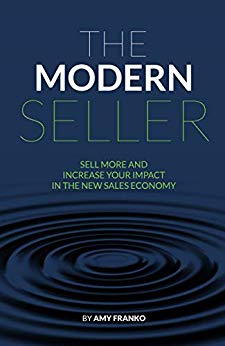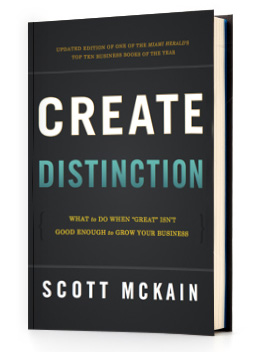What is the best sales methodology for B2B sales today? What are the most popular sales methods and why do so few B2B salespeople use Value Based Sales? In this post we will review a number of sales methodologies used to improve sales performance and why the Oscar for best B2B sales methodology goes to :Value Based Sales.
Sales has changed over the years. Salespeople and the companies they serve are constantly searching for the best sales method.
As I watched the Oscars the other night I thought how we need Oscars for sales and marketing strategies.
To understand why a Value Based Sales methodology outperforms other sales methods we need to briefly unpack how sales people sell and how sales has evolved over the years.
What are the sales methods salespeople have used and are using today?
Selling on Price
This is not a method most CEO’s and business owners want to hear. In this method you must have the lowest cost to manufacture and your team leverages this low cost-manufacturing competency to win and keep business.
Salespeople sell on price when they do not know or believe your value proposition or no one has trained them how to connect the dots between what you sell and the value proposition for customers.
Why this method is so common is it is what buyers want.
Buyers want to commoditize all products and services so the only differentiation is price. Just as we train our salespeople, companies like Karrass teach buyers to dismiss sales pitches and gobbledygook sales and marketing teams spew and quickly make the key buying decision all about price. If you have the lowest price you win today. When the vendor you displaced finds they lost the business what do they do? They drop the price and you loose. This starts a gross margin death spiral and the only one who wins is the buyer.
If you have never hear the term “gobbledygook” it means all those things we say and share on our web sites that no longer mean anything since everyone we compete against claims them too like:
Innovative
Best in class
Best Quality
Top performance
Flexible
Groundbreaking
Scalable
Robust
Cutting Edge
If you would like to learn more I encourage you to download the Gobbledygook Manifesto.
What I have found disturbing over the years when I ask salespeople why we lost a particular sale or account for that matter they say “price.”
When I conduct Win-Loss interviews with buyers, “price” is rarely one of the top reasons why a buyer buyers or chooses not to buy.
In this model your salespeople do not understand or believe your value proposition and they do believe the only thing that matters to buyers is the lowest price.
Sales finds all kinds of ways to sell , selling on price internally like : volume discounts, sales incentive rebates, volume purchase discounts, blanket order discounts and so on.
All of these and more are sales based on price.
Relationship Sale
It is true people buy from people they like. Buyers will have an impression of you within 7 seconds. In this model the salesperson strives to be liked by the buyer. They work hard to build a friendship through social lunches, dinners, and ball games. As one relational seller told me years ago: “I was the only rep invited to this buyer’s daughter’s wedding. “
In meetings you often wonder whose side the relationship seller is on? The buyer’s or yours? This seller believes their relationship with the buyer is their value proposition not your product or service.
A relational sales methodology is all about building a relationship and reinforcing that relationship through acts of service.
When I work with relationship sales people they often bring donuts and bagels and “check in ” with buyers and purchasing decision makers. When the relational salesperson is in the customer’s building everyone loves them. Rarely do they close the sale, or ask for the sale for that matter. They never have a pre-call sales plan and believe they will win whatever business the buyer has based on their relationship.
After a sales call with target accounts you will hear a relational salesperson share “it was a good meeting” although the sale did not advance and they did not win an order.
We find relational salespeople in sales farmer roles because they are terrible sales hunters.
Do you have relationship salespeople?Look where your salespeople spend their time. Are they selling and creating sales presentations? Or, are they checking on orders, when orders will ship, how we can ship them earlier, following up with customer service to determine when something will ship? If so, you have a salesperson using the relational sales method.
This is the least effective sales methodology, but unfortunately the one most underperforming salespeople rely on.
Product Sales
In this methodology the salesperson’s product knowledge is leveraged to win sales. The thought here is your salespeople are trained in features and benefits of your product or service. As Mike Shultz President of The Rain Group shares “If your people cannot speak fluently about your product and service offerings and ask the right questions to uncover specific needs that your solutions fulfill, then they are leaving money on the table and losing you deals.”
Here you will find companies that are often very inward looking and not customer centric. They design and manufacture products but their salespeople are not trained on what specific types to customers to call on and what problems their products solve.
As I have shared in the past, I have observed salespeople trained in the product methodology “show up and throw up”. It’s like they are playing feature and benefit Bingo with buyers just hoping one buyer will jump to their feet and yell: “BINGO! I know a problem you can solve for me!” When you are working with a product salesperson they speak 80% of the time in the sales call and do not ask many qualifying questions. After all what they are selling is so amazing a buyer would have to be an idiot not to buy right?
Every seller must understand their products and services. However today , with as much as 70% of the buying process being over before the buyer speaks with sales this method is not as successful as it once was. Back in the day, before the internet of things, buyers had to meet with sales to learn about products and services. Today this buying criteria is just one mouse click away.
Product knowledge is a part of a top performing salesperson, but can not be their sales method today if they want to achieve quota.
The Lone Wolf / Sales Mercenaries
In this sales method the salesperson relies on their personal sales skills, abilities and experience to close the sale. They have been through the school of hard knocks, feel they have been there, done that and nothing will surprise them. They are very self-confidant and often deliver results even if they can’t share how they do it.
The Lone Wolf / Sales Mercenaries are often the product of a poorly designed compensation structure and a culture that does not value salespeople. They are hired sales guns that sell their sales services to the highest bidder. Salespeople who use this method are masters at following their own instincts, and writing the rules as they play the game. They win various games but often leave sales, money, on the table because they are only focused on what benefits them the fastest personally.
I had a friend share once:
“Salespeople are like water, they find the path of least resistance.”
Lone Wolf Mercenaries are often found at inward facing companies who believe their product or service is so smart “even a monkey in kakis” could sell it. Their company not only does not value and appreciate the salespeople; they treat them like a necessary evil. Salespeople are treated like they are only as good as their last…sale. Their compensation plan creates commission junkies looking for their next fix not strategic partnerships with clients.
Lone Wolf’s have a high utilitarian trait. Other words if I do this I expect to get that.
The shame is these folks could create much more value if they were valued and appreciated.
They will get-r-done many times but how they do it will leave a mess to clean up and they are very hard to manage.
Consultative Sales
In this sales methodology salespeople are trained in product features and benefits and how to find buyer pain and solve the pain. Salespeople are trained in markets, and common problems their products solve in these markets.
In these buyer calls the salespeople speak about 50% of the time and ask open-ended questions searching for a problems they know they can solve. They are problem solvers.
When you observe salespeople using this method it feels like the child’s game we played in the pool “ Marko Polo”. “Marko… do you have this problem?” “Polo…yes we do” and sales races to tag the buyer and close the sale.
This model produces results if the buyer can connect the dots from the product or service to how it will impact their business drivers.
The Challenger Sale
This methodology became popular in the book The Challenger Sale, authors Matthew Dixon and Brent Adamson present a sales model to give buyers new ideas to solve problems they may or may not be aware they have. In this book the author shares 40% of high sales performers use this model. More than 50% of sales superstars use this method.
In the for what it’s worth column this was my sales method for a number of years.
This model teaches the selling to take control of the sales process.
You will find some sales calls feeling more like a debate than trying to solve the buyer’s problems. In this model you uncover issues the buyers may have they are unaware of that need solved.
I continue to recommend this book to business owners and salespeople wanting to improve their skills.
I have some advice if you choose to use this model:
First, it requires you to have some experience and knowledge about your customer, their industry and the business of their business. When I have seen young salespeople try to use this model is when they lacked the emotional intelligence and situational awareness to pull it off. They failed to earn the trust early in the relationship so their challenge felt like a canned marketing pitch not a real solution.
Second, I don’t want salespeople feeling they are in charge of the buying process. You are not. You can influence the buyer’s process but if you think and act like you are in charge you will fail. Top performing salespeople clearly and intimately understand the buyers buying process and criteria and they help move the sale by giving buyers what they need at each step of their buying process.
Don’t believe me?
Ok, how many of you reading this like to buy stuff? Almost all of you right?
How many of you like to be sold? Oh, big difference yes?
Enough said.
Agile Sales
A recent article in Selling Power shared how Agile Sales is the best method. You can read this article here and it shares the methods top sales performers use. The article is basically saying don’t get all hung up on one sales method or another. Top performing salespeople have situational awareness and they adapt their sales method based on the situation and buyer.
This thought leading article poses the question: what if we taught our sales teams 4-5 top sales methodologies and trained them to know what to use when? The author’s share having agility, flexibility does not imply we want sales teams “winging it”. We want them to have the EQ and situational awareness to be agile within defined parameters established in sales training.
I guess what gives me pause, is so many sales teams I have been asked to help lacked a formal repeatable sales process. Their leaders and owners thought they had one. How would we implement 4-5 when sales is not even executing on the one you thought they were using? Secondly, companies often provide very strong product training and little if any situational and sales scenario training. Companies will need to do voice of the customer work prior and identify the most common sales scenarios before training their sales teams.
I have adapted my sales method based on the industry, buyer, buying process and buyer personas over the years.
The difficulty is in tracking what worked when and where and in what scenario so it is difficult to scale throughout the sales team.
I believe Agile Sales Methodology is a smart strategy but is has so many moving pieces it will be difficult for most companies to implement and scale.
Value Based Sales Methodology
This is by far the best sales methodology I have experienced over the past 34 years of leading sales and marketing teams.
In this model you know your product or service. You know your market and ideal customer profiles. You have built rapport with the customer so you can have a meaningful business discussion. You know the problems your product or services solves and you have content and case studies to prove it. Your salespeople understand business acumen and speak in the language of business. They help buyers connect the dots between their proposed solution and how it impacts one or many of their key business drivers like…
Increase Sales
Reduce Costs
Increase Net Income
Improve Efficiency
Increase Market Share
Reduce the Cost of Sale
Increase Sales Close Rate
Increase Gross Margins
Salespeople who use a value based sales method are about creating value for their customers and in so doing win the sale today and create lifetime customers.
Don’t get me wrong, these salespeople are likable, but they are also not afraid to challenge customers. They help buyers connect the dots to how their product or service speaks to one or many of their business drivers.
This sales method has seen tremendous success and when used properly you will see it impact your business by:
Faster selling cycles
Higher Gross Profits per sale
Higher lifetime value of customer revenue
Higher sales to close %
Higher customer satisfaction
… but admittedly it is not easy!
From my own experience less than 10% of salespeople use a value based selling method. The reason why so few salespeople use this model is they too often struggle with connecting the dots between what they are selling and the value impact their customers receive.
As I have shared before salespeople who are not adequately trained in your value proposition assume the position of your product or service. The value based sales method requires mastery in commercial sales skills, business acumen, product knowledge and understanding of your value proposition, knowledge of the customers’ industry and common pain points, competitive analysis and the ability to propose innovative ideas professionally.
In this sales method you qualify and identify ways your product and or service can impact one or more of your customers’ business drivers.
Is that why so few of salespeople use it? They lack an understanding of how to impact a businesses’ bottom line?
Salespeople have told me this model is hard and takes way too long.
My argument is how can you enter into any negotiation with a customer until you understand and establish value? Or is that why so many salespeople resort to relationship and selling on price? Salespeople trained in value based sales know how to impact the customer’s bottom line so they can establish and reinforce value.
What Sales Methodology do you want your salespeople using?
What Sales Methodology are they using?
How do you know?
When was the last four legged sales call you went on to inspect what you expect?
Is there any scenario value based sales would not be the best sales method for B2B sales?
Congratulations… the Oscar for the Best B2B sales methodology goes to Value Based Sales.
Best supporting Oscar without any drama goes to Sales Enablement.







